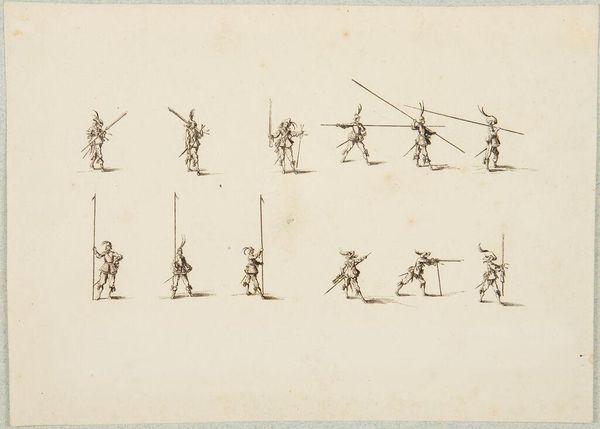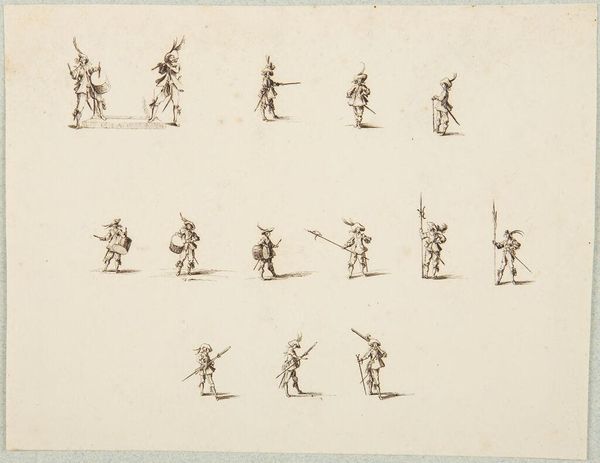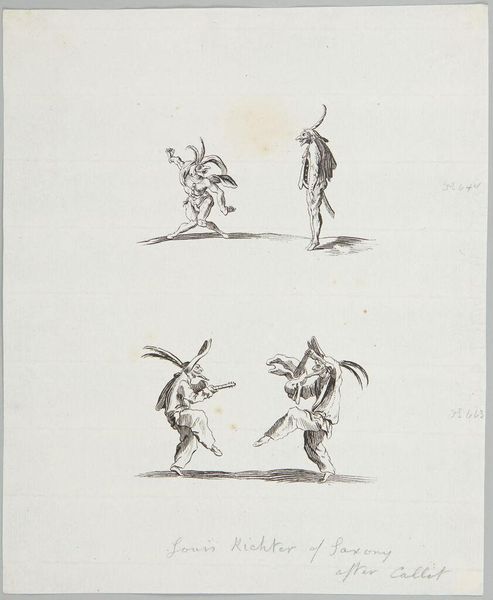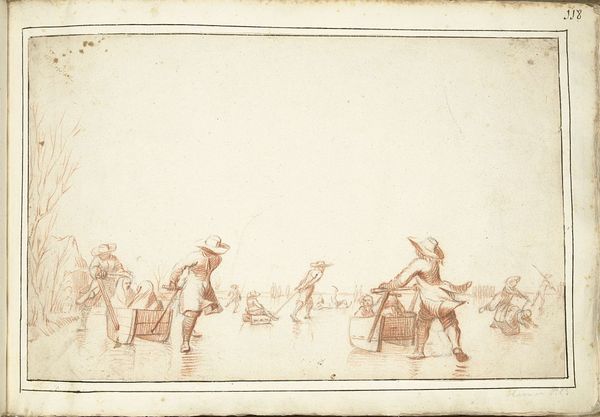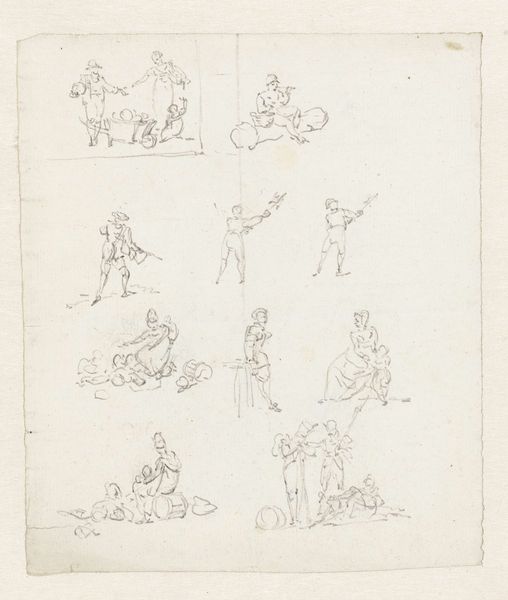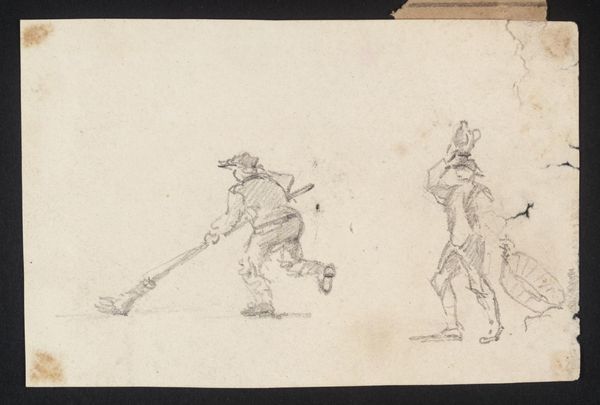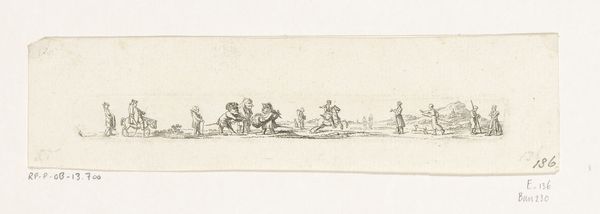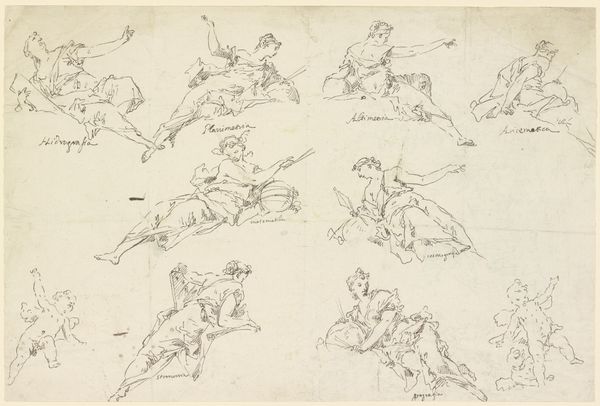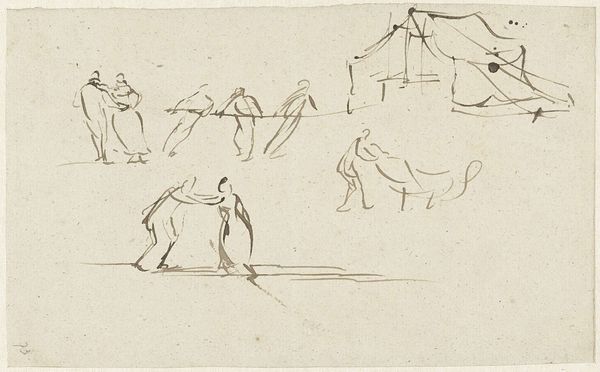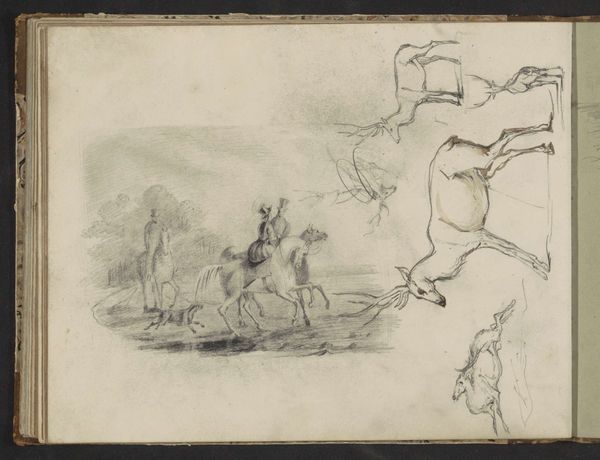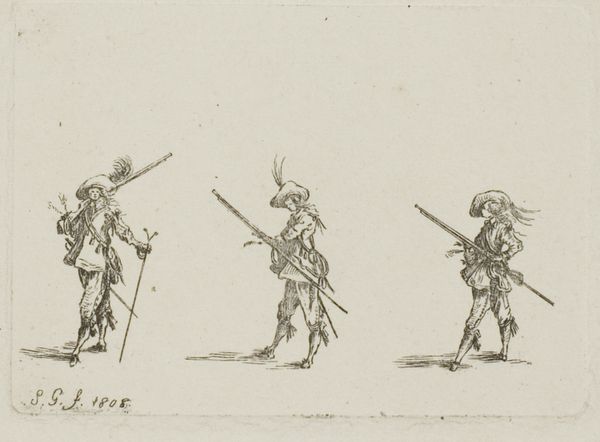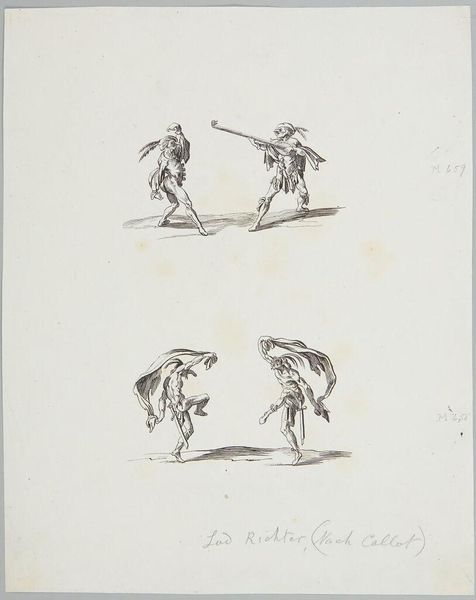
Exercises with Crossbow and Cannon, after Callot c. 19th century
0:00
0:00
Copyright: CC0 1.0
Curator: This is Adrian Ludwig Richter's "Exercises with Crossbow and Cannon, after Callot." It's a fascinating drawing from the 19th century, housed right here at the Harvard Art Museums. Editor: Immediately I see the echo of historical violence, but the almost playful style softens the blow. It's like a children's book illustration about war. Curator: It's worth noting that Richter’s work engages with the legacy of Jacques Callot, a master of depicting the brutality of the Thirty Years' War. Richter's reimagining seems to comment on the romanticization of conflict, perhaps critiquing 19th-century militarism. Editor: Yes, and the crossbows and cannons themselves are powerfully symbolic, conjuring images of shifting power dynamics and the evolution of warfare. They speak to cultural anxieties surrounding progress and its consequences. Curator: Right, the figures could be stand-ins for anxieties about modernization and the individual's role within systems of power. It’s quite a layered piece, when you consider the historical context. Editor: It does leave one to ponder how war imagery affects our collective psyche and continues to shape political discourse today. Curator: Precisely. And seeing it alongside Callot's originals, the drawing prompts difficult questions about the ethics of representation. Editor: I'm left wondering, what responsibility do artists have in depicting conflict across generations?
Comments
No comments
Be the first to comment and join the conversation on the ultimate creative platform.
